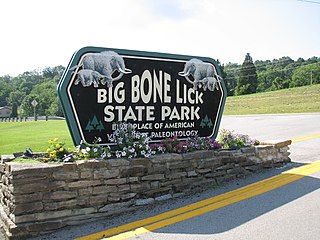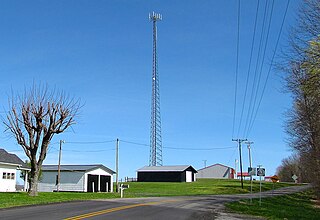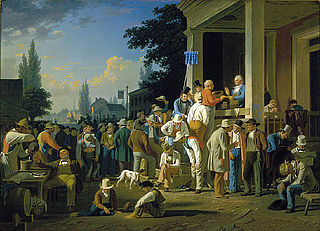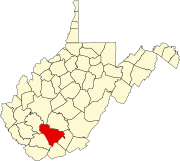Related Research Articles

Roanoke is an independent city in the U.S. commonwealth of Virginia. As of the 2020 census, the population was 100,011, making it the 8th most populous city in Virginia and the largest city in Virginia west of Richmond. It is located in the Roanoke Valley of the Roanoke Region of Virginia.

Buchanan County is a United States county in far western Virginia, the only Virginia county to border both West Virginia and Kentucky. The county is part of the Southwest Virginia region and lies in the rugged Appalachian Plateau portion of the Appalachian Mountains. Its county seat is Grundy.

Boone County is a county located in the northern part of the U.S. state of Kentucky. As of the 2020 census, the population was 135,968, making it the fourth-most populous county in Kentucky. Its county seat is Burlington. The county was formed in 1798 from a portion of Campbell County. and was named for frontiersman Daniel Boone.

Addison, commonly known as Webster Springs, is a town in and the county seat of Webster County, West Virginia, United States. Although it was incorporated as Addison in 1892, it is more frequently referred to as Webster Springs, the name of the town's post office. It was named for Addison McLaughlin, upon whose land the town was originally laid out. The population was 776 at the 2010 census.

Jasper National Park is a national park in Alberta, Canada. It is the largest national park within Alberta's Rocky Mountains spanning 11,000 km2 (4,200 sq mi). It was established as a national park in 1930 and declared a UNESCO World Heritage Site in 1984. Its location is north of Banff National Park and west of Edmonton. The park contains the glaciers of the Columbia Icefield, springs, lakes, waterfalls and mountains.

Big Bone Lick State Park is located at Big Bone in Boone County, Kentucky. The name of the park comes from the Pleistocene megafauna fossils found there. Mammoths are believed to have been drawn to this location by a salt lick deposited around the sulfur springs. Other animals including forms of bison, caribou, deer, elk, horse, mastodon, moose, musk ox, peccary, ground sloths, wolves, black bears, stag moose, saber-toothed cats, and possibly tapir also grazed the vegetation and salty earth around the springs that the animals relied on for their diet. One mastodon bone was unearthed here with a noticeable cut mark on it, implying that the Clovis people lived in the area thousands of years ago. The area near the springs was very soft and marshy causing many animals to become stuck with no way to escape. It bills itself as "the birthplace of American paleontology", a term which dates from the 1807 expedition by William Clark undertaken at the direction of President Thomas Jefferson. In Nicholas Cresswell's journal, dated 1774 to 1777, he records a visit in 1775 to what was then called "Elephant Bone Lick." In this account, Cresswell describes finding several bones of "prodigious size", as well as tusk fragments, and teeth—one weighing approximately 10 pounds. While he assumed the bones were from ancient elephants, the local native traditions claimed the bones to be those of white buffaloes that had been poisoned by the salty water.

A mineral lick is a place where animals can go to lick essential mineral nutrients from a deposit of salts and other minerals. Mineral licks can be naturally occurring or artificial. Natural licks are common, and they provide essential elements such as phosphorus and the biometals required in the springtime for bone, muscle and other growth in deer and other wildlife, such as moose, elephants, tapirs, cattle, woodchucks, domestic sheep, fox squirrels, mountain goats and porcupines. Such licks are especially important in ecosystems with poor general availability of nutrients. Harsh weather exposes salty mineral deposits that draw animals from miles away for a taste of needed nutrients. It is thought that certain fauna can detect calcium in salt licks.

Big Bone is an unincorporated community in southern Boone County, Kentucky, United States. It is bounded on the west by the Ohio River, and Rabbit Hash, on the south by Big Bone Creek, which empties into the river at Big Bone Landing. The northern extent is along Hathaway Road, and the eastern portion extends not further than U.S. 42, and is approached from that direction by Beaver Road coming from either Richwood or Walton. Big Bone took its name from a nearby prehistoric mineral lick of the same name. Geographical features of interest include Big Bone Lick State Park and the now disappeared Big Bone Island.

Mary Draper Ingles, also known in records as Mary Inglis or Mary English, was an American pioneer and early settler of western Virginia. In the summer of 1755, she and her two young sons were among several captives taken by Shawnee after the Draper's Meadow Massacre during the French and Indian War. They were taken to Lower Shawneetown at the Ohio and Scioto rivers. Ingles escaped with another woman after two and a half months and trekked 500 to 600 miles, crossing numerous rivers, creeks, and the Appalachian Mountains to return home.
Clover Lick is an unincorporated community in Pocahontas County, West Virginia, United States. Clover Lick is located along the Greenbrier River, 10 miles (16 km) northeast of Marlinton. The community is home to the Clover Lick Train Depot, which sits along the Greenbrier River Trail at Milepost 71.2. Clover Lick was founded in the early 1900s as a place to board trains traveling along the Greenbrier River.
Lick Creek is an unincorporated community in Summers County, West Virginia, United States. Lick Creek is located near the west bank of the New River, 21 miles (34 km) south of Hinton.
The Lost River is a 31.1-mile-long (50.1 km) river in the Appalachian Mountains of Hardy County in West Virginia's Eastern Panhandle region. The Lost River is geologically the same river as the Cacapon River: It flows into an underground channel northeast of McCauley along West Virginia Route 259 at "the Sinks" and reappears near Wardensville as the Cacapon. The source of the Lost River lies south of Mathias near the West Virginia/Virginia border. Along with the Cacapon and North rivers, the Lost River serves as one of the three main segments of the Cacapon River and its watershed.
Mays Lick(a.k.a.Mayslick, originally known asMay's Lick) is census-designated place and unincorporated community located in Mason County, Kentucky, United States, about nine miles southwest of Maysville.
White Stick, alternatively Whitestick, was a town in Raleigh County, West Virginia. that existed from 1911 to 1935. It was north of Pinepoca on Piney Creek. It was a station stop on the Chesapeake and Ohio Railway's Piney River Branch.

Mud Lick is a rural unincorporated community in Monroe County, Kentucky, United States. It is concentrated around the intersection of Kentucky Route 63 and Kentucky Route 870, northwest of Tompkinsville.

Paleontology in Kentucky refers to paleontological research occurring within or conducted by people from the U.S. state of Kentucky. Kentucky's abundance of exposed sedimentary rock makes it an ideal source of fossils. The oldest exposed rocks in Kentucky are of Ordovician age. The geologic column of Kentucky also contains rocks deposited during the ensuing periods until the end of the Pennsylvanian. During this span of time the state was first home to a warm shallow sea home to an abundance and variety of brachiopods, cephalopods, crinoids, and trilobites. During the Devonian, a large reef system formed at what is now the Falls of the Ohio. Swamps covered Kentucky during the ensuing Carboniferous period. Then a gap spans from the start of the Permian to the Pleistocene, although the gap is interrupted by minor deposits of Cretaceous and Eocene rocks. These deposits mainly preserve plant fossils. Ice Age Kentucky was home to short-faced bear, bison, elk, lions, mammoths, mastodons, and giant ground sloths. Local Native Americans interpreted fossils of this age at Big Bone Lick as belonging to ancient monsters killed by benevolent mystical little people. This same fossil deposit would attract attention from major American figures like George Washington, Daniel Boone, and, especially, Thomas Jefferson. Amateur fossil collectors should be aware that they need permission from landowners to prospect legally on private property. Brachiopods are the Kentucky state fossil.

The Boonslick, or Boone's Lick Country, is a cultural region of Missouri along the Missouri River that played an important role in the westward expansion of the United States and the development of Missouri's statehood in the early 19th century. The Boone's Lick Road, a route paralleling the north bank of the river between St. Charles and Franklin, Missouri, was the primary thoroughfare for settlers moving westward from St. Louis in the early 19th century. Its terminus in Franklin marked the beginning of the Santa Fe Trail, which eventually became a major conduit for Spanish trade in the Southwestern United States. Later it connected to the large emigrant trails, including the Oregon and California Trails, used by pioneers, gold-seekers and other early settlers of the West. The region takes its name from a salt spring or "lick" in western Howard County, used by Nathan and Daniel Morgan Boone, sons of famed frontiersman Daniel Boone.
Bone Creek is a stream located entirely within Ritchie County, West Virginia.

Armistead Abraham "Cousin Abe" Lilly was an American lawyer, politician, and businessperson in the U.S. state of West Virginia. A Republican, Lilly served as the 16th Attorney General of West Virginia from March 4, 1913, until March 3, 1917.

William H. Davis was an American educator and school administrator in the U.S. state of West Virginia. Davis was the first teacher of Booker T. Washington, and the first and only African-American candidate for West Virginia governor in 1888.
References
- ↑ U.S. Geological Survey Geographic Names Information System: Bone Lick, West Virginia
- ↑ Sibray, David (January 27, 2019). "Historian looks for patterns in vanishing town names". West Virginia Explorer. Retrieved March 21, 2022.
- ↑ "Place Names in West Virginia". West Virginia Division of Culture and History: Archives and History. 2012. Retrieved March 21, 2022.
- ↑ "Bone Lick, WV". August 24, 1933. p. 1 – via newspapers.com.
